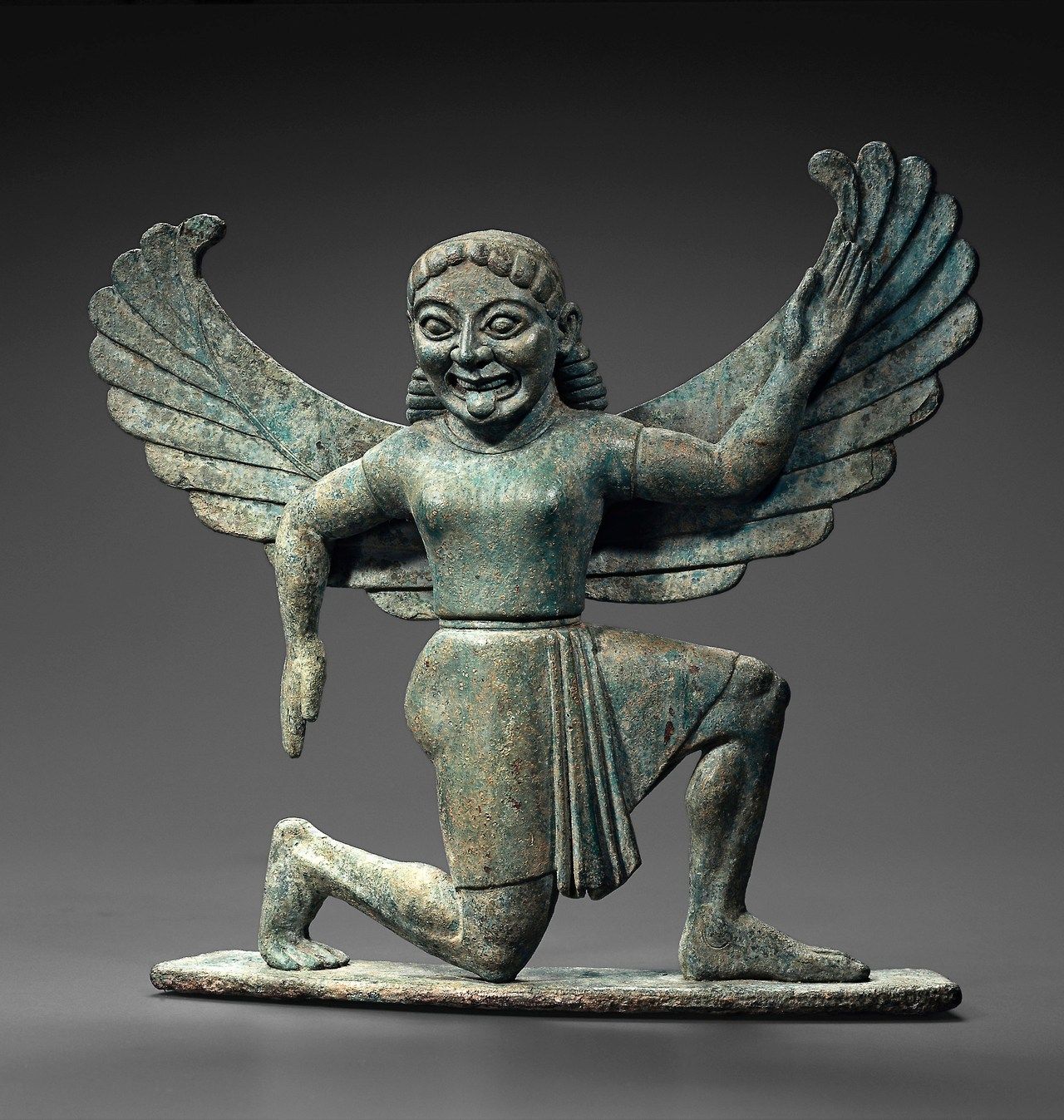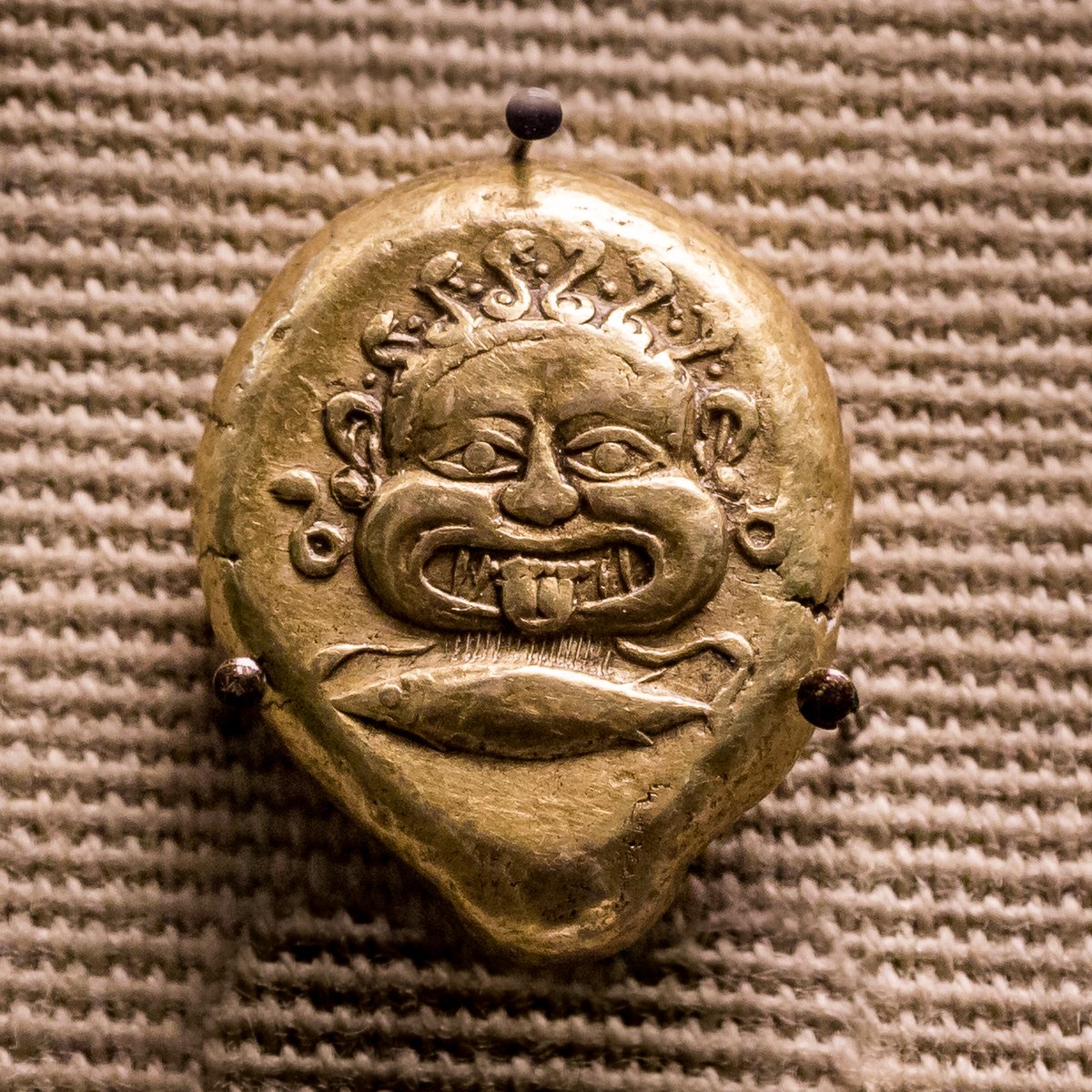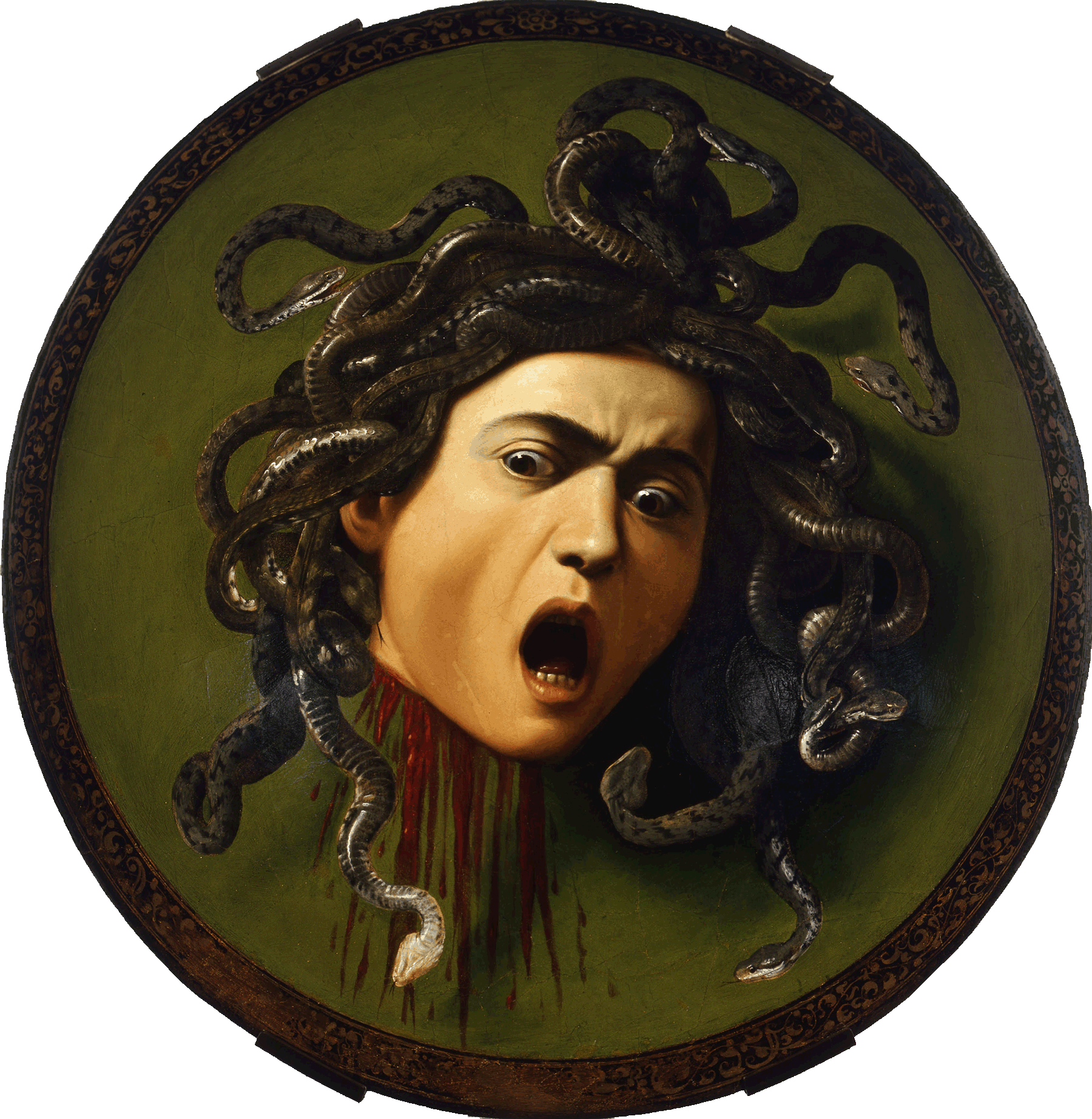
Medusa was one of the Gorgons, creatures originally considered quite monstrous, who over the centuries came to be humanized and even regarded as beauties transformed into snake-haired villains. In this episode, we’ll dig back to the most ancient sources to examine the bare bones of the myth.
We begin with a nod or two to the pop-culture Medusa. Oddly, one of the first big-screen appearances of a Gorgon did not represent Medusa herself but a sister, whose spirit takes bodily form to terrorize a 19th-century German town. It’s a 1964 Hammer Film featuring both Christopher Lee and Peter Cushing called, The Gorgon, a rare deviation from the studio’s habit of remaking Universal horror films. We hear a bit from the film’s trailer.
However, the film that did the most to fix the character of Medusa in the minds of audiences seems to be 1981’s The Clash of the Titans. It follows (quite loosely) the adventures of Perseus as he battles, among other things, Medusa, and a sea monster, Kitos in the Greek stories, but oddly given the Scandinavian name “Kraken” for the film.
Clash of the Titans is best remembered as the swan song of stop-motion wizard Ray Harryhausen, a nostalgic advantage that was hard to compete with when its ill-fated 2010 sequel was produced. We discuss some variances with the classical mythology and between adaptations and hear bits from the 1981 and 2010 trailers as well as a snippet of Percy Jackson & the Olympians (2010),which offered a modern incarnation of the figure of Medusa for kids.


Next we have a look at the classical mythology of the Gorgons, creatures most famous for their hair of snakes and ability to turn men to stone with their gaze. Their appearance, we learn, was generally described in earliest texts as quite grotesque, characterized by fearsome mouths, tusks, and wings. In art, they were typically represented by disembodied heads, explicitly heads recently severed by the hero Perseus.
Medusa, as many listeners will already know, belongs to the group of creatures called Gorgons, denoting a very very limited set of beings, only three, all sisters. We hear a bit about their individual traits, parentage, and home in some far-off (variously defined) land, where their habitat is usually a cave.
Before examining the story of Perseus vs. Medusa, we look at an aspect to the Gorgon’s story that wasn’t part of the original narrative, but appeared toward the 1st century, an element which became particularly important in how Medusa is embraced in more recent culture, namely an explanation for her snakey hair involving a curse laid upon her by Athena.
Next we get some background on Perseus, the strange way in which he was fathered by Zeus and a mortal woman, and the circumstances that brought him to an island where King Polydektes sends him on his quest to obtain the Gorgon’s head (note to self: avoid boastful talk).
To prepare himself for this encounter, Perseus must seek out the Graeae, or “grey ones,” a triad of crone-like sisters who know the ways of the Gorgons as they share the same parents. Their distinguishing feature is the communal possession of only one eye which each uses in turn, something Perseus is able to turn to his advantage.
In most or many versions of the myth, Perseus is then directed onward to obtain magical tools needed against the Gorgon from the Hesperides, nymphs of the sunset. He receives a special curved sword or sickle, a bag in which the head is to be carried, winged sandals from Hermes, and a helmet of invisibility from Hades. Sometimes he also receives a polished shield allowing him to view the Gorgon indirectly as a reflection and thereby avoid her deadly gaze.

The decapitation of Medusa in the classical story is a bit uneventful as Perseus finds the Gorgon asleep and easy prey when he arrives at their cave, but on the way back to present the head to King Polydektes, he does make time to battle a sea monster, Kitos (the cinematic “Kraken”) Mrs. Karswell reads for us a dramatic telling of this tale by Ovid.
After decapitating Medusa, Perseus makes good use of the head, which handily retains its petrifying powers. A few accounts of encounters involving this weapon are also shared with listeners.
Stepping back from the myth itself, we have a look at the use of the Gorgon’s head as a symbol of power and intimidation in ancient Greek culture, something called the aegis when worn by mythological beings (Athena and Zeus primarily) and called a gorgoneion when employed by mortals as an apotropaic charm against evil.
We wrap up the show with a look at two completely bizarre Filipino films from the ’70s featuring, if not Medusa herself, an actress outfitted much like her (dangerously so, it seems, as live snakes were used.) The first goes by a number of names, but most often, Devil Woman (1970), and the even stranger sequel is Bruka Queen of Evil (1973). As they are Filipino-Hong-Kong co-productions, they feature lots of martial arts scenes, as well as a witch with human head and snake body, an army of midgets, and battles with basement-budget walking trees and bat people.
.